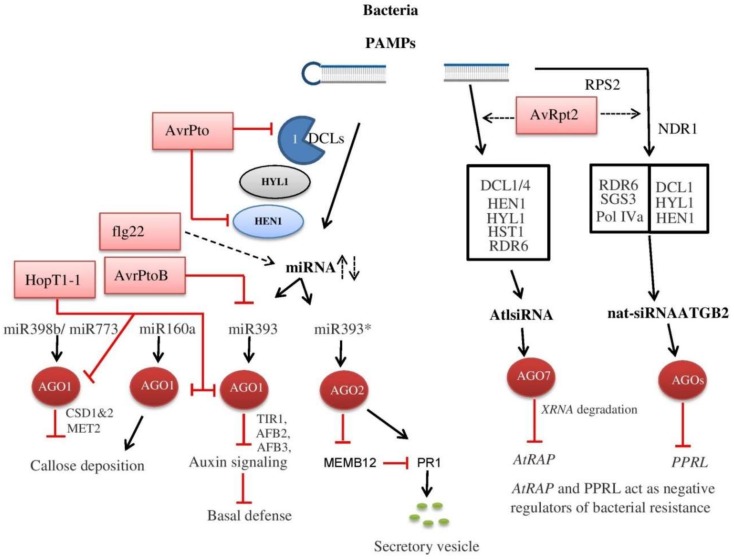Figure 4.
Role of RNAi in plant–bacterial interaction. Upon bacterial infection, plants detect pathogen-associated molecular patterns (PAMP) and control the accumulation of various siRNA or miRNAs through RNAi machinery. These sRNAs either enhance the defense related signals and resistance genes or silence certain genes that negatively regulate plant immunity. In response to the PAMP-triggered immunity (PTI) system, bacteria produce certain effectors that suppress host RNAi mechanism (pink box). Hasty1 (HSTY), Resistance protein 2 (RPS2), Non-race specific disease resistance protein (NDR1), Pentatricopeptide repeats protein-like (PPRL), RNA binding domain abundant in apicomplexans (RAP), MEMB12 (Membrin), Pathogenesis-related protein (PR1), Transport inhibitor response 1 (TIR 1), Auxin signaling F-Box proteins 2 and 3 (AFB2&3), Copper superoxide dismutases 1 and 2 (CSD1&2), Methyltransferase (MET).

